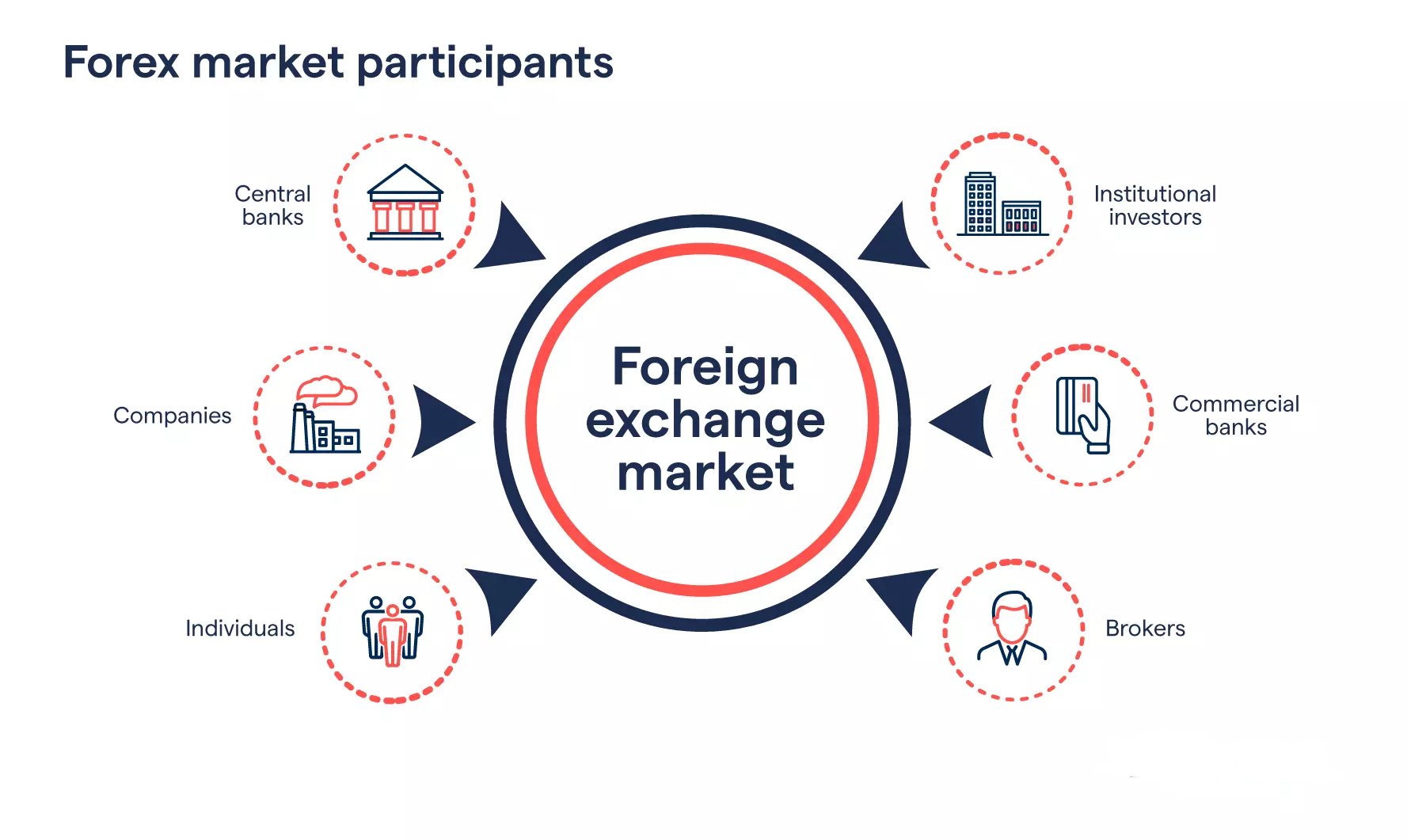Forex vs Crypto
Trading foreign exchange currencies is popular. However, trading cryptocurrencies has also taken center stage over the year. Discover the difference between trading currency pairs (forex) and cryptocurrencies.

What is forex and what is crypto?
Forex is an abbreviation for foreign exchange – a financial market that enables you to get exposure to international currency pairs. Essentially, it’s the market in which one currency is converted into another.
When trading forex, you’d buy and sell one currency against another at an agreed price. If you’ve ever bought an item from an international online vendor in a currency that’s different to your native lender, you’ve had exposure to forex.
Forex vs crypto: what are the differences?
Even though the forex and crypto markets have similarities, such as being driven by supply and demand, they do have some significant differences. We discuss these differences in detail below:
Market participants
There are more market participants involved in the forex market, which is more developed compared to cryptocurrencies. The forex market participants range from central and commercial banks, investment funds, companies, retail brokers and traders.
Different foreign exchange participants have a role that they play in the market. For instance, commercial banks are the main hub or cornerstone that facilitate an exchange of currency pairs being traded on an international level. Central banks enter this market not to make profits, but to stabilize the national currency exchange rate, which impacts the country’s economy.1

In the cryptocurrency market, there are three types of participants – exchanges, miners and traders. Exchanges are digital marketplaces where you can buy and sell cryptocurrencies. Crypto miners are people or companies that complete blocks using verify transactions within the blockchain network. Cryptocurrency traders, on the other hand, speculate on the rise and fall of the price movement and don’t take ownership of the underlying crypto coins.
Size
The forex market is large, mainly since it’s composed of transactions from international entities such as companies, banks, investors, funds and individuals, who depend on this system to exchange foreign currencies in real time.
While still in its teen years, the cryptocurrency market has made huge strides as blockchain networks have expanded. In 2021, the global cryptocurrency market was valued at $1.5 billion and is expected to reach $2.3 billion by 2028.2
Structure
The forex and cryptocurrency market structures are mostly dependent on demand and supply, which have a bearing on how traders can negotiate on the price without the approval of government agencies. Trading forex and cryptos can be done over the counter (OTC) and or through an exchange or brokerage.
The market structure for both forex and crypto are also decentralized, meaning they are not issued by a central authority like the government, therefore no single party controls the market. Some consider this transparency to be the strength of the market, especially in the case of cryptos.
Compared to traditional currencies traded on the FX market, cryptocurrencies mainly exist only in the digital space and are stored on a blockchain. Cryptocurrency transactions only take place via digital wallets and are verified once they have been mined.
The forex structure is mostly within the formalized markets and regulated. On the other hand, cryptocurrencies have a less formal structure, making them more susceptible to criminal activity and or fraudulent transactions.
Accessibility of assets
The forex market provides more accessibility as compared to digital assets like cryptocurrency. tastyfx offers trading on over 80 exchange currency pairs available globally but tastyfx does not do cryptocurrency business. These include major pairs like AUD/USD, EUR/CHF and EUR/GBP. The minor pairs are CAD/CHF, CAD/JPY and CHF/JPY, while the exotic currency pairs include CHF/HUF, EUR/CZK and EUR/HUF.
Cryptos have less liquidity. They also require a wallet and an exchange account to trade, which have deposit limitations and can be expensive to maintain.
Unlike the limited number of foreign exchange currency pairs available worldwide, there are over 11,000 cryptocurrencies, and counting, that’re actively traded on the blockchain, in addition to the well-known ones like bitcoin and ether. This also makes it hard, if not impossible, to track the cryptocurrency market in its entirity.3
Volatility
Both markets are volatile, however cryptocurrencies tend to experience more volatility than forex pairs. This means crypto prices are highly likely to be affected by even the smallest of market movements, leading to significant fluctuations in a single trading session. Volatility will increase your risk, it’s important to manage your risk carefully.
Forex pairs, on the other hand, have high daily trade volumes with frequent movements within narrow bands. This high volatility rate, as compared to other asset classes, aside from cryptos, is what attracts a lot of traders.
How do you trade or invest in forex and cryptos?
With us, you can trade spot forex using leverage. This will enable you to increase your exposure by paying an initial deposition – called margin – that’s a fraction of the full value of the underlying currency. When trading on leverage, you can speculate on the price movements of forex pairs or cryptocurrencies without taking ownership of them.
Ensure you understand the risks and benefits of forex trading associated with leveraged since they can either amplify your gains or your losses, depending on the position of your trade.
How to start trading forex
- Open a forex trading account with us
- Choose a currency pair to trade
- Decide whether to ‘buy’ or ‘sell’
- Set your stops and limits
- Open your first trade
- Monitor and close your position
Forex vs crypto: which one is safer from a regulatory perspective?
It’s important to note that both the forex and cryptocurrency market aren’t regulated in a similar manner. The forex market is OTC, which involves numerous transactions among several market participants such as central banks and investment funds and is heavily regulated.4
In the US, the FX market is regulated by the Commodity Futures Trading Commission (CFTC) and National Futures Association (NFA). Cryptos, on the other hand, are largely not regulated in the US. The very existence of cryptos, be it in the US and the many regions in which it’s available for trading or investing, has been to bypass government agencies or so-called ‘middle man’.
Forex vs cryptos summed up
- Forex is the market in which one currency is converted into another, enabling you to get exposure to international currency pairs
- Crypto is a digital currency that records and verifies transactions on a decentralized system that can be used similar to a traditional lender
- There are a several differences between forex and cryptos from markets participants to size, structure, accessibility to assets and volatility
- Both markets are volatile, however cryptocurrencies tend to experience more volatility than forex pairs
- The forex and cryptocurrency market aren’t regulated in a similar manner
Footnotes:
1 IFC Markets, 2021
2 GlobeNewsWire, 2022
3 Yahoo!finance, 2021
4 Bybit Learn, 2021
This information has been prepared by tastyfx, a trading name of tastyfx LLC. This material does not contain a record of our trading prices, or an offer of, or solicitation for, a transaction in any financial instrument. You should not treat any opinion expressed in this material as a specific inducement to make any investment or follow any strategy, but only as an expression of opinion. This material does not consider your investment objectives, financial situation or needs and is not intended as recommendations appropriate for you. No representation or warranty is given as to the accuracy or completeness of the above information. tastyfx accepts no responsibility for any use that may be made of these comments and for any consequences that result. See our Summary Conflicts Policy, available on our website.
